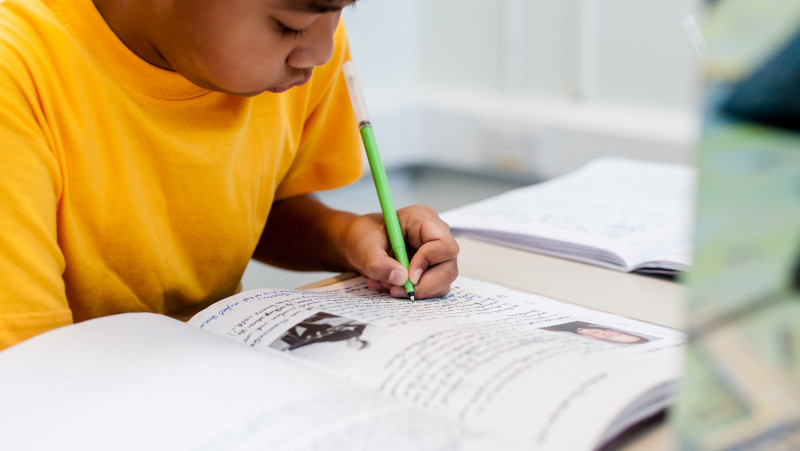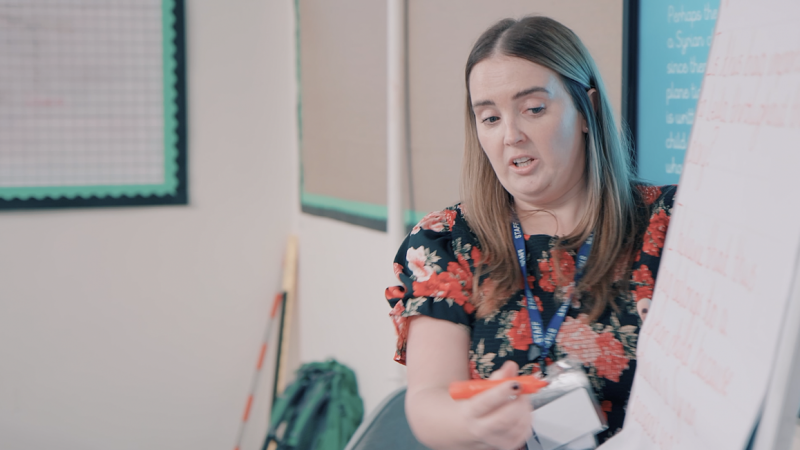Posted on: 05/04/2024
In the second part of our How to Use series, we look at the Mixed-age Planning Suggestions (MAPS) . Mixed-age classes can be challenging for teachers, particularly when it comes to planning writing. This ‘how to use...’ guide gives teachers an outline of how our mixed-age planning can help and offers suggestions of how they can be implemented.
Literacy Tree Writing Roots provide sequences of lesson for teachers to follow. They offer a pathway through a quality text and ways to embed the end-of-year expectation of the National Curriculum in each year group. However, a growing number of Literacy Tree schools have mixed-age classes, which brings an extra challenge when adapting the Writing Roots for the needs of children.
Teaching a mixed-age class can be challenging. Teachers have to pitch a writing outcome so it is both accessible and challenging for adjacent year groups simultaneously in a lesson. As such, we have provided every Writing Root with Mixed Age Planning Suggestions. These have been thoughtfully designed to provide mixed-age class suggestions for each session in every Writing Root from Reception to Year 6.
If you are teaching in a school which has mixed-age classes, the first port of call will be our suggested mixed-age Curriculum Maps. These can support you to plan a text overview for each class, following a two-to-three-year cycle. In these overviews, we have suggested a progression of texts, ensuring coverage of punctuation and grammar skills as well as outcomes. These are suggested text overviews which teachers and subject leaders can change if needed. These can be found in the subject leader toolkit section of the website (editable versions are also available on the website).
The MAPS are not separate to the main Writing Roots but are written to work in tandem with the whole class teaching. Whilst the MAPS can be found at the back of the Root, we would recommend (after printing these out) using it alongside the main Root so that the writing journey can be tracked through each session.
The MAPS gives suggestions as how to how to layer the independent work section of the session plans in order to scaffold, prompt, support and challenge children to meet the required standards.
Do I need to teach year group sessions separately?
The aim is for the Mixed-age Planning Suggestions to be manageable when teaching a mixed-age class to allow children to stay on the same journey within the same text and context, without the need for separating the class into year groups or to ‘split’ the sessions (though at times, of course you may wish to do this).

The MAPS offer ways to pitch skills and learning outcomes for adjacent year groups. For example, in the Writing Root for the Fan Brother’s Ocean Meets Sky, the main Writing Root is pitched at Year 2 and the MAP offers suggestions for Years 1 and 3. In a session where children are asked to describe a setting, Year 1 children will be encouraged to focus on adjectives which they will be given and asked to sort into colour, texture and size. Once sorted, children will move on to use one or two of these adjectives in a single-clause sentence. The Year 3s on the other hand will be focusing on using prepositions and abstract nouns to expand their descriptive phrases, embedding these in a ship’s log.
The MAPS also offer scaffolds, including word banks, so children may be able to access potentially trickier skills, as well as ideas to challenge and extend. As in the main Writing Roots, the planning is cyclical with the same skills being repeated in new contexts over time.
Reception Writing Roots have suggestions for Year 1 and 2 children; the Year 6 Writing Roots contain suggestions for Year 4 and 5.
The MAPS, like the main part Writing Roots, have detailed examples of shared writing for the vast majority of lessons. These are modulated to reflect the different pitches of the lessons, within the same outcome, and are highlighted where key skills are embedded. Teachers are supported in thinking about how they might tweak different parts of their shared write in order to support and extend.

School and Individual Members can book a place onto our Using Mixed Age Planning Suggestions Workshop on 16th April here.
Posted in: How to use